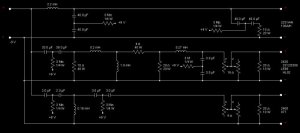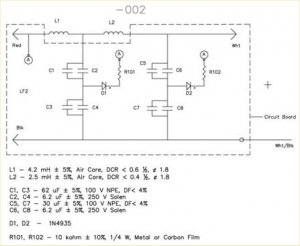Originally Posted by Greg Timbers
"The capacitor biasing is something that has existed for many years. Tube equipment does it automatically since there is usually a large DC offset between stages. Some early transistor amps/preamps had two polarized caps in series with the center point going to ground through a large resistor.
I personally became aware of this technique for speaker systems through communications with Ed Meitner, currently of EMM Labs. He is a wealth of information regarding these "tricks" to help linearize or improve the sound of passive components.
It turns out that the bias trick actually increases measured IM distortion and the higher the bias voltage, the greater the increase. It is not by a great amount, but it is measureable. The sound imporvement (or change) is very rarely perceived as worse and is never linked with a increase in IM distortion. The sonic effect is one of smoothness, increased spaciallity, detail and stuff like that. IM has a muddling or confusing effect so I doubt that this particular steady state measurement is explaining the sound difference either way.
Simply put, we are striving to create a class A situation but as was just pointed out, depending on the bias voltage with respect to the voltage across the capacitor, we may only have an "A" condition up to a particular drive level. So if it makes you happier, consider the change to be class AB, but heavily biased to A. You must also keep in mind that the voltage across the input terminals of the crossover network does not tell you what voltage or current is applied to any individual component. Some parts block signal and others shunt signal so the loading on a particular part is not obvious. For the most part, the caps are well taken care of with 9 volts, even at healthy drive levels. The obvious choice for 9 volts is the small cheap battery and holders that are available. No current is involved so a smoke detector battery and holder is a natural choice.
We did do one system with 18 v (M9500). Certain of the Japanese reviewers thought it was an improvement. I can't personally tell any difference. I am also told on a regualr basis (again by our Asian customers) that the battery must be changed at least every 90 days and that the sound degrades after that. Once again, I have not been able to "hear" any difference after 90 days and the battery is certainly still good for many years from a voltage standpoint.
What playing around I have done with initial application of a battery to a biased circuit (that has not been previously powered up) is that it takes about 3-5 seconds for the soundstage to change. I have tried to measure the voltage level in that time period and it seems that several volts is all that is necessary to accomplish 90% or more of the improvement. Once a circuit has been energized, it is nearly impossible to return it to zero. You have to individually short out each cap and leave them shorted for a while or else they will creep back up somewhat. If you replace the battery with a short and play the system for a while, the caps will start to bias themselves, although not to anywhere near the same degree.
You can take this opinion for what it has cost you. I have been very pleased with biasing for many years. I use it in all applications that involve a capacitor and I have rarely been disappointed. Results may vary so if it doesn't do it for you that is okay too. It cost a bloody fortune to implement as it requires 4 times the capacitance and double the capacitor parts count. The network size gets huge as well. Inspite of this, I have never heard a capacitor type that didn't improve (or change) including the nearly perfect teflon variety."




